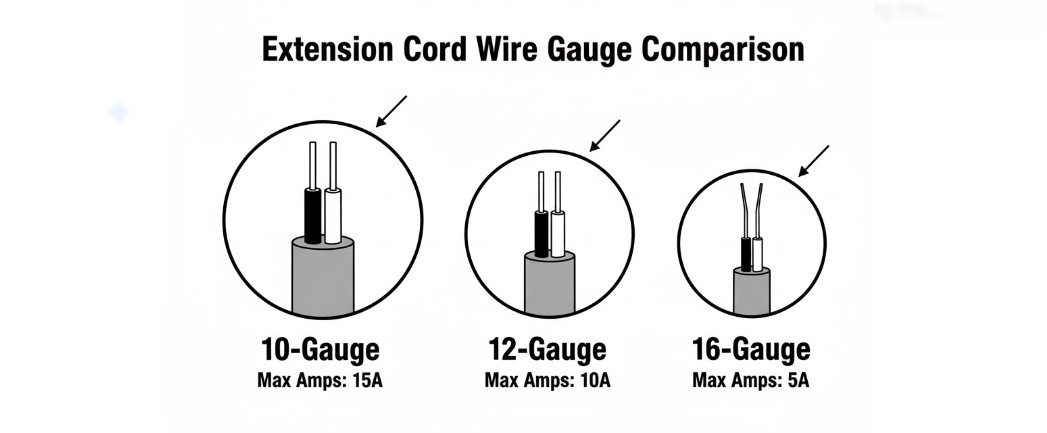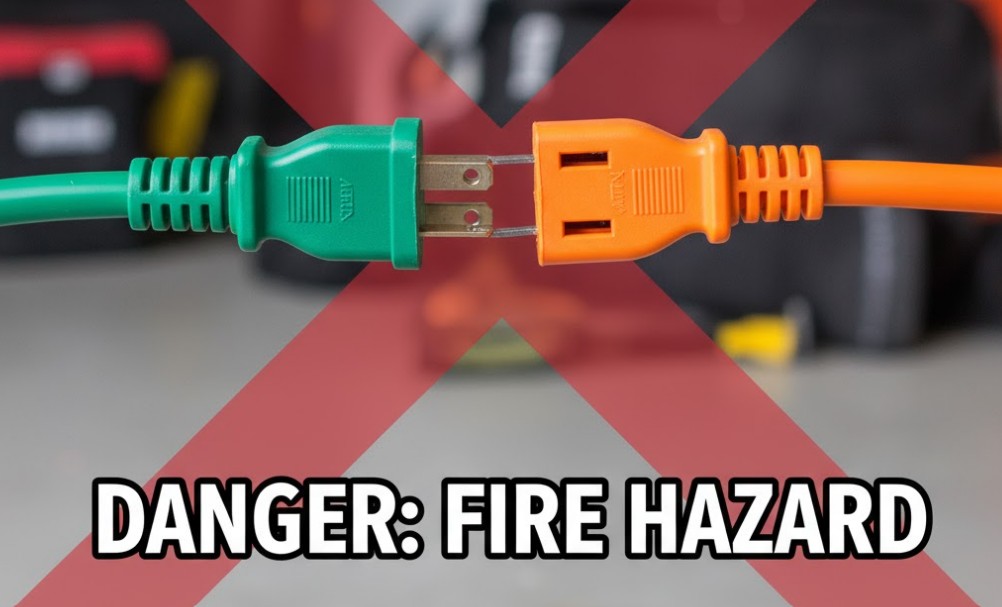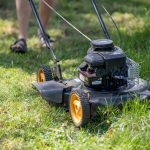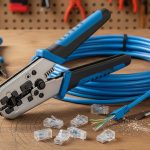A portable generator is an invaluable tool, providing essential power during outages, at remote job sites, or during recreational activities. It offers freedom and security, bridging the gap between being completely powerless and maintaining normal life or work. However, connecting your generator to your home or appliances requires careful attention, and the extension cord—the lifeline of this temporary power system—is often the weakest and most hazardous link.
Understanding how to safely use extension cords with generators is not just a matter of convenience; it’s a critical matter of safety that protects your property from fire and your family from electrocution. Unfortunately, simple mistakes, like using the wrong gauge cord or overloading a connection, are shockingly common and can lead to severe consequences. This comprehensive guide will walk you through every phase of generator cord safety, from selection and calculation to placement and maintenance, ensuring your temporary power setup is robust and hazard-free. We aim to replace assumption with accurate knowledge, making your generator use secure and efficient.
The Core Dangers: Why Generator Cord Safety Matters
Before diving into the specifics of selection and setup, it’s vital to recognize the potential pitfalls. Most generator-related accidents involving cords stem from ignorance regarding basic electrical principles. We often treat extension cords as simple wires, but they are sophisticated conductors whose limits must be respected.
Fire Risk: Overheating and Insulation Breakdown
The primary danger of improper cord use is fire. When an extension cord is too long, too thin (small gauge), or carrying too much current (amps) for its capacity, it experiences what is known as resistive heating. As the conductor (the copper wire) resists the flow of electricity, it generates heat. This phenomenon is amplified when multiple cords are “daisy-chained” together. Consequently, the cord’s protective jacket, or insulation, can melt, exposing the bare wires. This can lead to a direct short circuit, igniting nearby flammable materials like dry grass, carpeting, or the generator itself. Therefore, correct sizing is paramount.
Electrical Shock and Electrocution
Any damage to the cord’s insulation, whether from overheating, being pinched under a door, or driven over, presents a severe shock hazard. If the exposed wire contacts a grounded object or a person, it creates a deadly pathway for electricity. This danger is particularly acute when using generators outdoors, where rain, dew, or damp ground can easily complete a circuit. Moreover, using cords designed only for indoor use in wet outdoor environments increases this risk dramatically, as their jackets are not designed to withstand moisture.
Generator Damage and Efficiency Loss
Using undersized or excessively long cords doesn’t just risk fire; it harms your generator and reduces its efficiency. The resistance in an improper cord causes a voltage drop. When the voltage delivered to an appliance is too low, the appliance must draw more current (amps) to perform the same amount of work, stressing its motor or internal components. Simultaneously, the generator is forced to work harder and potentially less efficiently to maintain output, which can be quantified by understanding topics like generator efficiency. This premature wear and tear can shorten the generator’s lifespan and increase maintenance costs.
Phase 1: Choosing the Right Extension Cord (The Equipment)
Selecting the correct cord is the single most important step in generator safety. An extension cord is not a generic accessory; it is a precisely engineered piece of equipment that must match the power requirements of your appliances and the output capabilities of your generator.
The Importance of Gauge (Wire Thickness)
The cord’s gauge, or the thickness of its conducting wires, determines its capacity to carry current safely. This is where most users make a mistake. The American Wire Gauge (AWG) system is counter-intuitive: the smaller the AWG number, the thicker the wire and the more current it can handle. For instance, a 10-gauge wire is thicker and safer than a 14-gauge wire.
Understanding AWG and Ampacity
The term ampacity refers to the maximum current, measured in Amperes (amps), that a conductor can continuously carry without exceeding its temperature rating. For generator extension cords, you should typically look for heavy-duty, outdoor-rated cords that are 12-gauge or 10-gauge. Never use a common household 16-gauge or 18-gauge cord for a high-demand appliance like a refrigerator or furnace connected to a generator. Using a cord with insufficient ampacity is a direct path to overheating and fire.
The Role of Cord Length in Voltage Drop
Length is the second factor governed by gauge. Resistance increases proportionally with the length of the wire. Even a properly sized cord, if too long, will cause a significant voltage drop, as discussed earlier. Standard safety guidelines recommend keeping the distance between the generator and the appliance to the minimum necessary. For longer runs (e.g., over 100 feet), you should always step up to the next lower AWG number (e.g., from 12-gauge to 10-gauge) to compensate for the loss. Always consult a chart matching amp load, cord length, and gauge before purchasing.

Plug Types and Ratings (NEMA Standards)
Generator outlets are not always standard 15-amp household outlets. Most powerful generators use special NEMA locking receptacles (such as L5-30 or L14-30) that require a specific corresponding plug. These locking plugs prevent the cord from being accidentally pulled out, a critical safety feature that prevents arcing and potential electrocution. Ensure your heavy-duty cord has the correct plug end to match your generator’s specific outlet. Never modify or bypass these specialized plugs, as they are essential for safely distributing the generator’s higher power output.
Cord Jacket Material (Insulation)
The outer jacket protects the conductors and insulation from the environment. Look for cords marked with an “W” (e.g., SJTW, STW), which indicates suitability for weather resistance and outdoor use. The material is crucial for longevity and safety. Choosing from the best generator extension cords often means selecting one with a rugged vinyl or rubber jacket that resists abrasion, moisture, sunlight, and heat. This material resilience is key to maintaining the cord’s integrity over repeated use.
Phase 2: Matching Cord Load to Generator Capacity (The Calculation)
Once you have the correct cord, the next step is ensuring the electrical load you place on it—and ultimately, on the generator—is managed properly. Overloading is the most common operational mistake.
Calculating Appliance Wattage
Before plugging anything in, you need to know the wattage of the appliances you intend to run. Most appliances list their wattage on a plate or sticker. You must consider two types of wattage: starting wattage (surge), required briefly to start motor-driven items like refrigerators or air conditioners, and running wattage (continuous), required to keep them operating. The sum of the running watts determines the minimum continuous capacity required, while the largest single starting watt determines the surge capacity needed.
The 80% Rule (Continuous vs. Surge Power)
A fundamental safety rule in electrical engineering is the 80% rule. You should never continuously load a circuit (or a generator) beyond 80% of its maximum rated capacity. For example, if your generator is rated for 5,000 running watts, you should limit your total continuous load to 4,000 watts (5,000 x 0.8). This 20% buffer prevents overheating, handles minor fluctuations in power demand, and extends the life of the generator’s engine. Furthermore, to fully grasp your generator’s capabilities and limitations, it’s beneficial to read and understand documents detailing understanding generator set ratings. Operating within this margin is a sign of a professional, safe setup.
Avoiding Daisy Chains and Multi-Taps
A daisy chain is the practice of plugging one extension cord into another to increase length. This is strictly prohibited in safe generator use. Every connection point adds resistance, increases the risk of voltage drop, and dramatically elevates the potential for a localized hot spot and fire. Similarly, avoid multi-tap plugs (those little cubes that turn one outlet into three or more) at the end of a long generator cord, as they allow users to draw current far in excess of the cord’s safe rating. If you need multiple connections, use a power distribution cord that has properly rated outlets built into a single, continuous, heavy-gauge line.

Phase 3: Placement, Routing, and Physical Safety (The Setup)
Even the perfectly sized cord can become a hazard if not routed correctly. The physical placement of the cord influences everything from fire risk to tripping hazards.
Protecting Cords from Physical Damage
Extension cords are designed to be temporary, but they must be treated with care. They should never be routed through windows, where the glass or sash can pinch the wire, or under doors, where repeated closing can damage the jacket. Any crushing or abrasion can compromise the internal insulation, leading to a shock or fire risk. If a cord must cross a path, it should be covered with a non-slip cable protector ramp specifically designed for foot and vehicle traffic.
Crossing Walkways and Traffic
If you must cross a walkway, use a protective rubber ramp to prevent tripping and cord damage. For vehicle traffic, heavy-duty industrial cord protectors are mandatory. This not only protects the public but also ensures the cord maintains its electrical integrity, thus preventing internal damage that might lead to a fault years later.
Protecting Cords from Weather (Sunlight, Rain)
While outdoor-rated cords have resilient jackets, they shouldn’t be submerged or allowed to rest in standing water. Never operate a generator or any cord connection in a downpour unless the connection points are protected by a dedicated waterproof plug cover or temporary housing. Prolonged exposure to direct sunlight can also degrade the plastic jacket over time, leading to cracking and brittle insulation, so storage in a cool, dark place is recommended when not in use.
The Critical Danger of “Backfeeding.”
This is arguably the most lethal mistake in generator use. Backfeeding occurs when a generator is connected directly to a home’s electrical system (usually via a dryer outlet or main breaker panel) without a proper transfer switch. When the utility grid power comes back on, the generator’s power is pushed out onto the utility lines. This creates a deadly voltage on the lines outside the home, capable of electrocuting utility workers trying to restore power. Never attempt to power your entire house through an improper connection; use only designated, properly installed transfer switches or rely on extension cords to power individual appliances directly.
Phase 4: Maintenance and Advanced Concepts (Long-Term Use)
Longevity and security are often ensured through proper maintenance and understanding advanced concepts that go beyond simple cord selection.
Regular Cord Inspection and Replacement
Generator cords, especially heavy-gauge models, are a significant investment, but they are consumables. Before and after every use, perform a thorough visual inspection: check for cracks, nicks, discoloration (a sign of overheating), or stiff areas. Pay particular attention to the area just behind the plug ends, as this is where the wires often break internally from stress. If a cord is damaged, replace it immediately; do not attempt to repair it with electrical tape, as this only hides the danger and fails to restore the cord’s protective rating.
Cord Reel Safety vs. Laying Flat
Cord reels are convenient for storage, but they pose a significant safety risk during use. If a cord remains coiled on a reel while current is flowing through it, the heat generated by the resistance has no way to dissipate effectively. This can lead to thermal runaway, causing the inner layers of the cord to melt rapidly. Always fully unspool any extension cord reel before plugging it into a generator and connecting a load. This maximizes air circulation and keeps the cord cool.
Efficiency Considerations in Power Transfer
From an efficiency standpoint, every foot of extension cord is a potential power loss. While an ideal conductor would transfer 100% of the energy, real-world resistance means some power is wasted as heat. This wasted energy must be compensated for by the generator, demanding more fuel. Minimizing cord length and maximizing gauge (using a smaller AWG number) minimizes power loss and improves your generator’s fuel economy and overall generator efficiency. Being conscious of this allows you to run your appliances longer on the same tank of fuel.
Phase 5: Alternative and Modern Solutions
While extension cords are necessary for portable use, there are advanced solutions that can improve safety, especially for home backup power.
Transfer Switches: Bypassing Cords Entirely
A permanently installed manual transfer switch is the safest, most professional, and most convenient way to power a home with a portable generator. This system is wired directly into the main electrical panel and includes a mechanically interlocked switch that physically prevents the utility power and the generator power from being connected simultaneously. Using a transfer switch eliminates the need for running extension cords throughout the house, mitigating all the associated tripping and fire hazards.
Generator Cord Sets and Spider Boxes
For job sites or large areas, specialized heavy-duty generator cord sets and spider boxes (portable power distribution centers) offer a superior alternative to multiple standard extension cords. A spider box plugs into the generator’s large locking outlet and provides multiple GFCI-protected household outlets. This central distribution point uses the correct heavy-gauge wiring for the main run and allows only short, individual appliance cords to run from the box, increasing safety and organizational efficiency.
Considerations for Solar and Battery Backup Cables
The principles of cord safety extend to modern backup power solutions, too. If you are using a portable power station (often charged via solar panels) as a generator alternative, the same gauge and length rules apply to the output cables. Furthermore, the specialized cables used for charging these stations, such as those covered in guides to the best solar panel extension cables, must be chosen carefully to minimize resistance and maximize charging efficiency. Even low-voltage DC current requires correctly sized conductors to prevent heat and energy loss.
Final Thoughts
Using a generator safely is a layered process that begins and ends with the extension cord. From selecting a low-gauge, high-capacity cord to diligently inspecting it before and after each use, every action you take contributes to a safer environment. Never compromise on safety to save a few dollars on a cheaper, thinner, or shorter cord. The cost of a fire or, worse, an injury, far outweighs the savings.
By following this guide on how to safely use extension cords with generators, you are taking responsibility for your power setup. Embrace the 80% rule, choose outdoor-rated equipment, and always verify that your cord’s ampacity exceeds the demands of your appliances. Preparedness means being safe, and electrical safety is paramount.
Amranul is a highly experienced product review writer with a passion for helping readers make smart, informed purchasing decisions. Since 2018, he has specialized in thoroughly researching and analyzing a wide range of products to deliver honest, in-depth reviews. Amranul combines technical accuracy with clear, engaging writing to break down complex product features and highlight true user value. Look for his reviews to find reliable information and expert insights you can trust before you buy!





